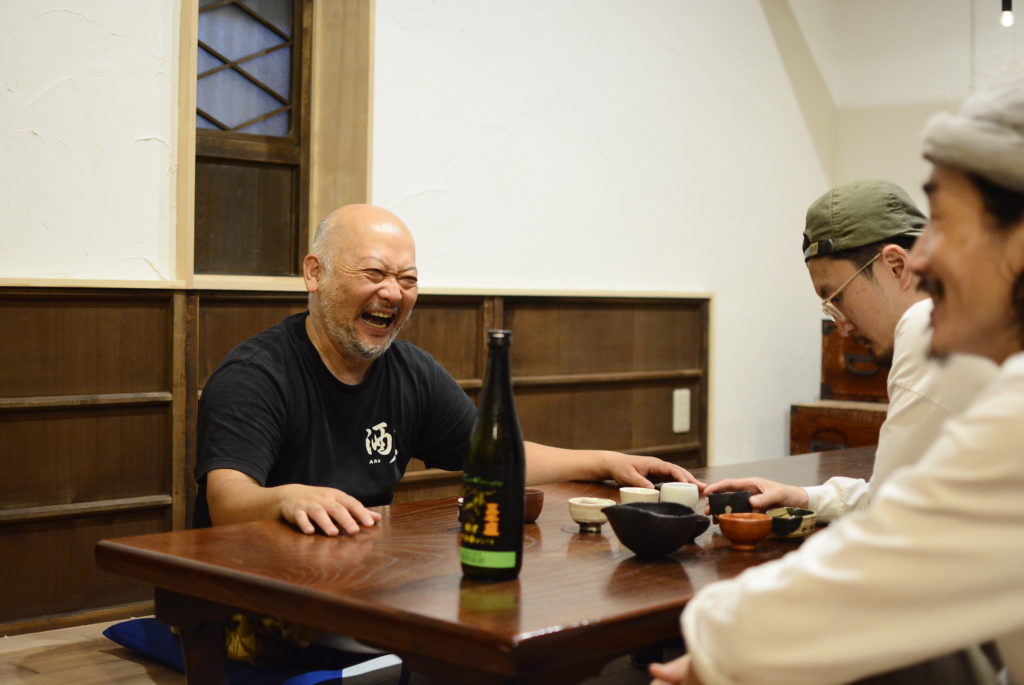Shinmachi Building—the heart of Higashi Mino’s ceramic art culture today
Yama-no-Hana, in Tajimi City, is a gallery and select shop that specializes in ceramics from the Higashi Mino area. The owner, Kazuya Hanayama, originally managed a brand of pottery with his circle of ceramic artists. By extension, he was nursing an idea.
“Higashi Mino was home to many ceramic artists, but it needed more venues for showcasing their work. If I had guests from outside Gifu, for example, I would find there weren’t enough galleries or shops where I could show them my favorite pieces. My solution was to create that venue myself. And so I started looking for places.”
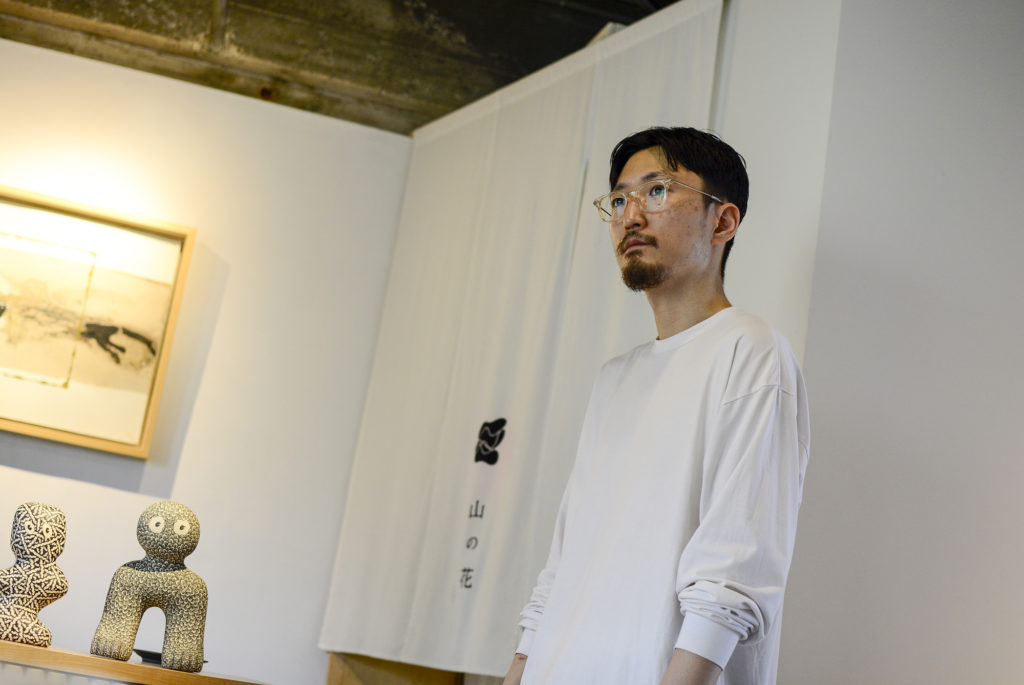
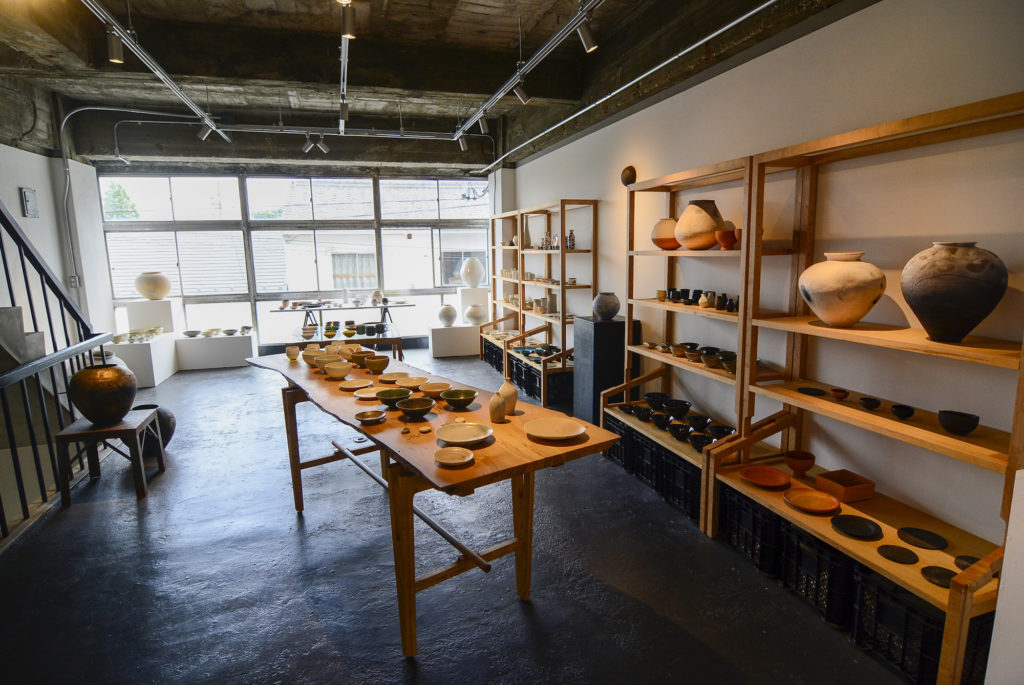
One day, word reached Mr. Hanayama that a 50-year-old building that had been vacant for some two decades might be available for rent. In 2019, Mr. Hanayama renovated this building, named it Shinmachi Building, and opened Yama-no-Hana. Mr. Hanayama stocks ceramics only from Higashi Mino, but he had no reservations about limiting his range of offerings.
“I once took part in a major ceramic art event in the Kanto region—the heart of Japan lying next to the Chubu region containing Gifu—and what caught my eye there was the work of Tsutomu Takeshita. He is based in Toki City, next to my home of Tajimi. Out of all the pieces of ceramic art exhibited from up and down Japan, Mr. Takeshita’s vessels were comforting because in a good way, they didn’t make a statement. This made me realize anew that I was in love with the work from this area.”
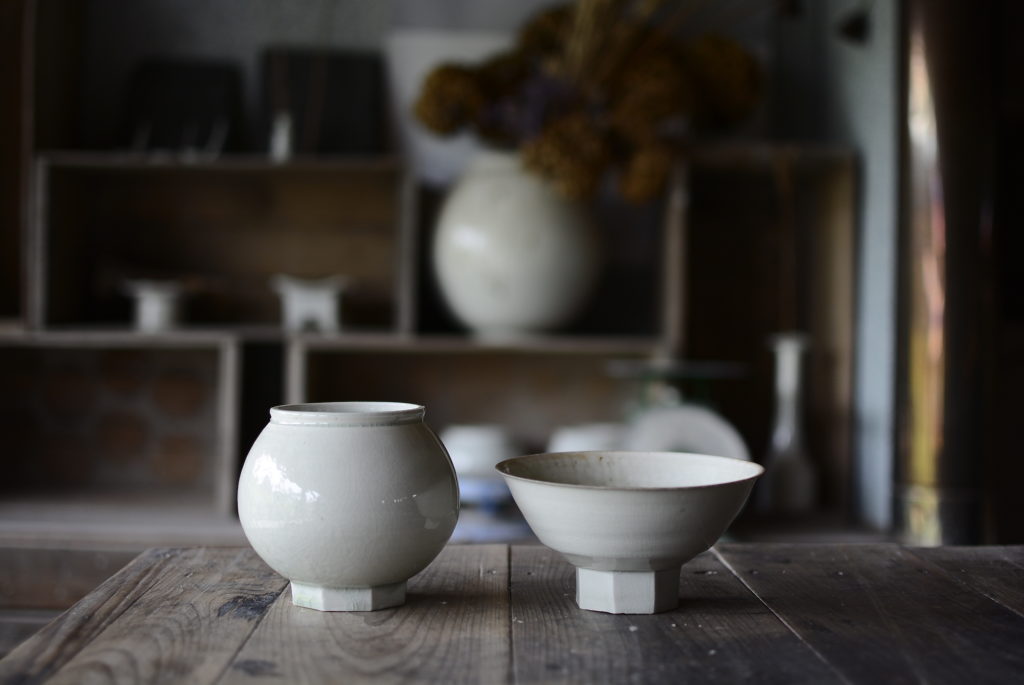
Mr. Takeshita uses techniques based in Joseon white porcelain to create vessels with a translucent white color. Popular for the simple designs that match well with any food, they have been a staple of Yama-no-Hana since its opening. Above Yama-no-Hana on the fourth floor of Shinmachi Building is a select shop owned by Mr. Hanayama’s business partner, Masafumi Mizuno.
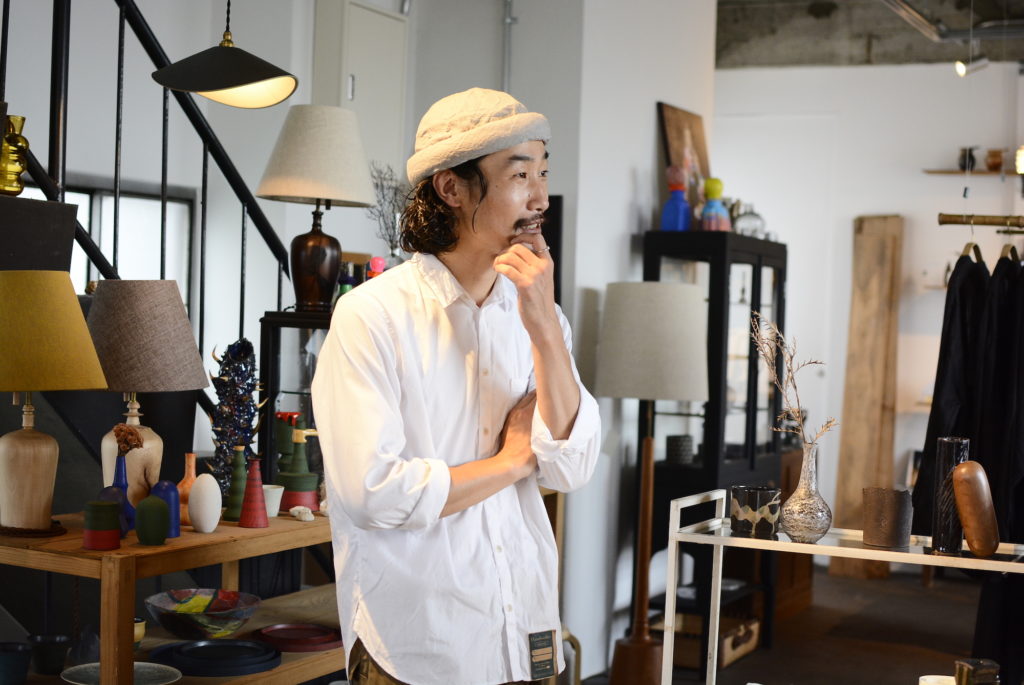
“Whereas Kazuya stocks ceramics exclusively from Higashi Mino, I deal in all genres of work—ceramic art, woodenware, glassware, and clothing—by artists from all over Japan.”
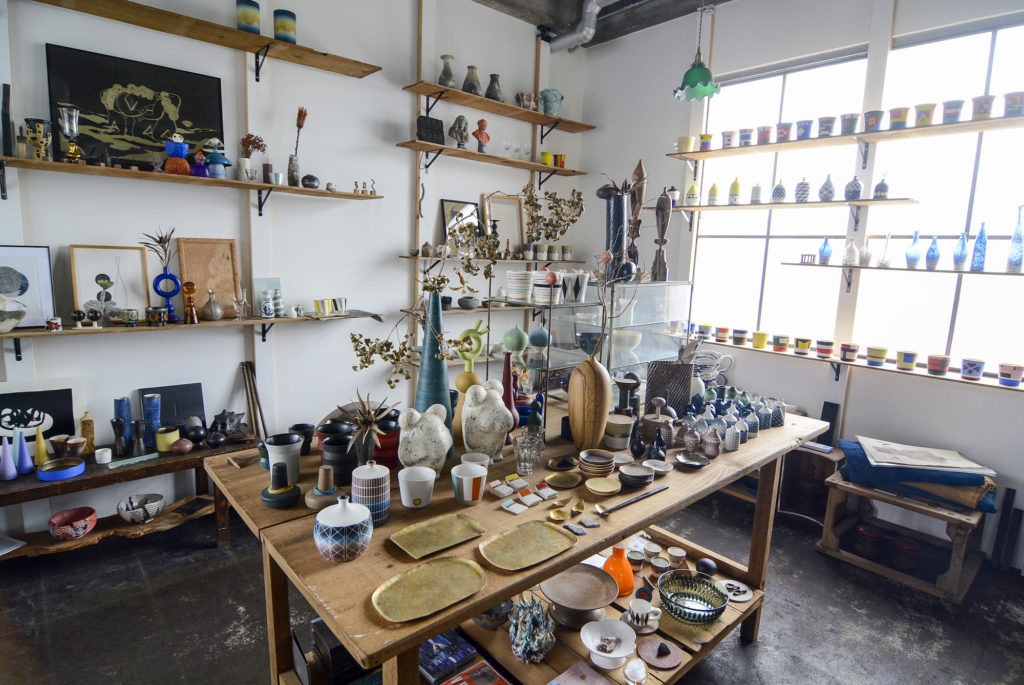
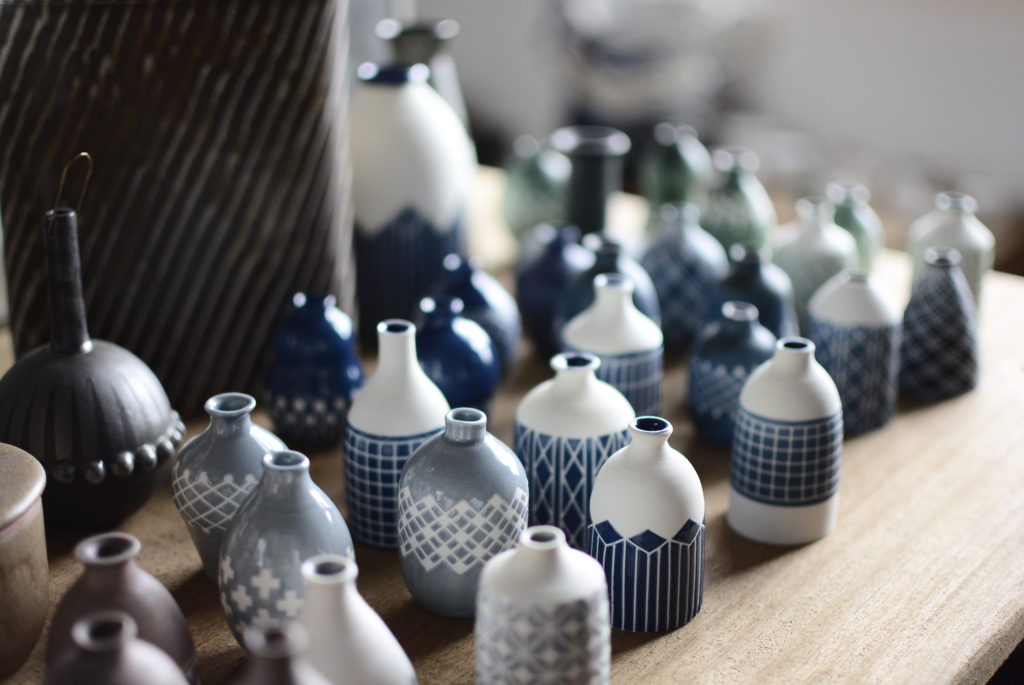
Mr. Mizuno’s selection is curated specifically to attract artists living in the area. Thus featuring a variety of works centering on ceramics, Shinmachi Building is a magnet for all kinds of people including ceramic artists. It’s a place for encounters and exchanges, and the hub of a new culture.
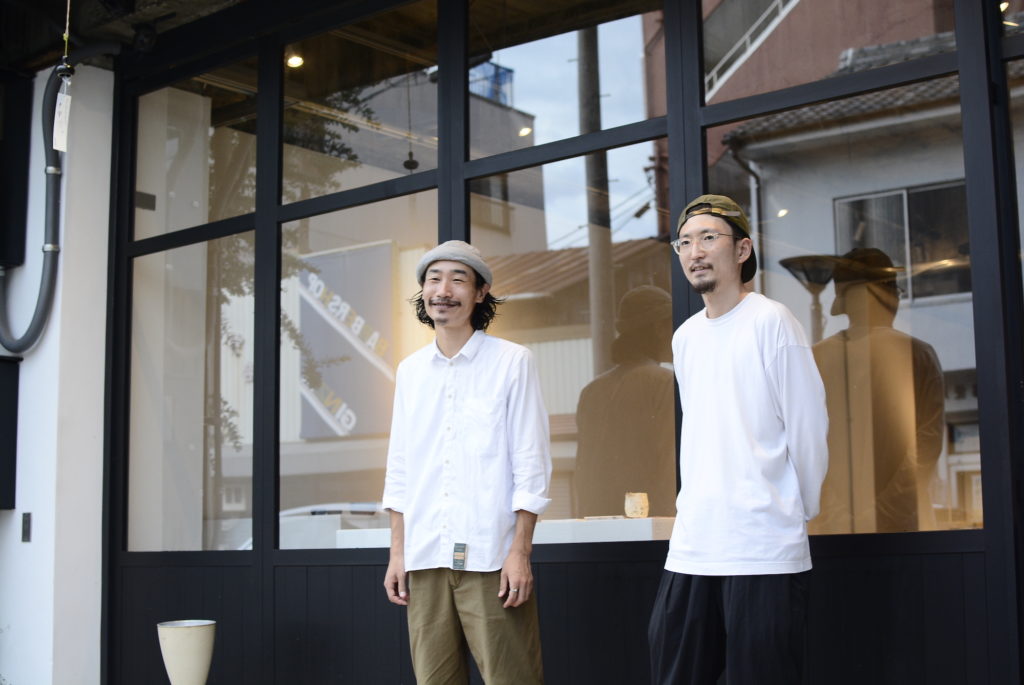
Sake made from Higashi Mino’s soil and water
The gently sloping mountainous terrain of Higashi Mino creates temperature differences between day and night that help to grow delicious rice—this is testified by wooden tablets used as shipping labels as far back as the 7th century. Higashi Mino’s icon of rice production is Sakaori Tanada, in Ena City. The terraced rice fields are selected as one of the Hundred Finest Rice Paddies in Japan for the masonry built some four centuries ago by Kurokuwa, a group of master civil engineers responsible for the magnificent stone walls of Nagoya Castle. Products of Sakaori Tanada include a phantom rice variety called Mine Asahi, and a popular label of sake made with Sakaori Tanada rice.
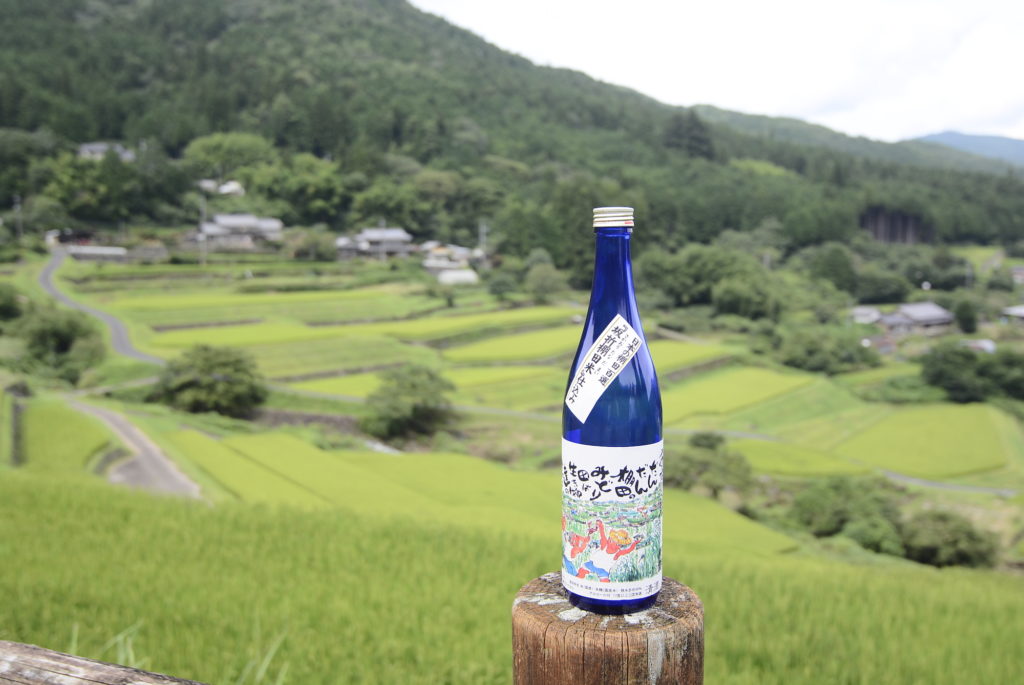
Ena Shuzo, situated in the mountains of Nakatsugawa City, is a sake brewery rooted in the local community—it grows its own rice and then uses it to produce sake. The entire family of proprietors continues to take part in rice planting in order to preserve the paddies passed down from their ancestors. This type of family-owned sake brewery is not unusual in Higashi Mino. The area as a whole produces Hidahomare, a leading variety of sake rice from Gifu Prefecture. The brewers take advantage of the soft water from the mountains both to grow the rice and to make the sake, creating products with a round mouthfeel that has devoted fans nationwide.
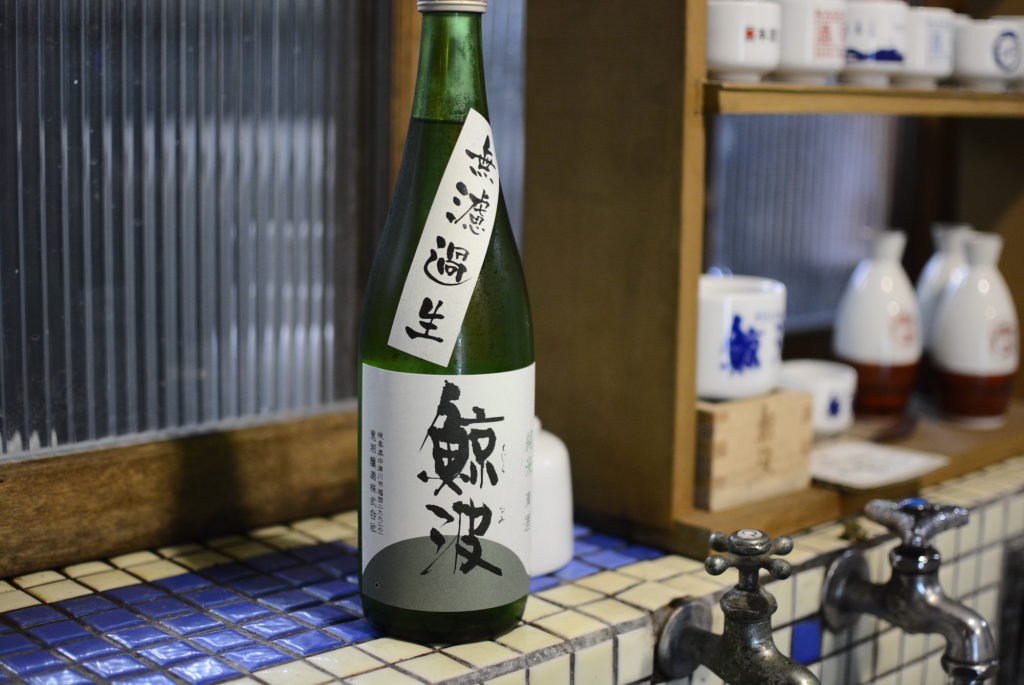
Kani City, at the western end of Higashi Mino, is home to another unique sake brewery called Hayashi Shuzo. Though an established business founded in 1874, it embraces flexible practices in tune with the present times. A significant example is its new label Rick, created by the American in-house brewer Rick Young. In the process of developing his debut label, Mr. Young gave the fermentation tanks nicknames like Stephanie and Suzan and tended to them day and night. The finished product may lack polish, but it has earned a reputation for it’s wild flavor that reflects the nature of the creator’s native USA.
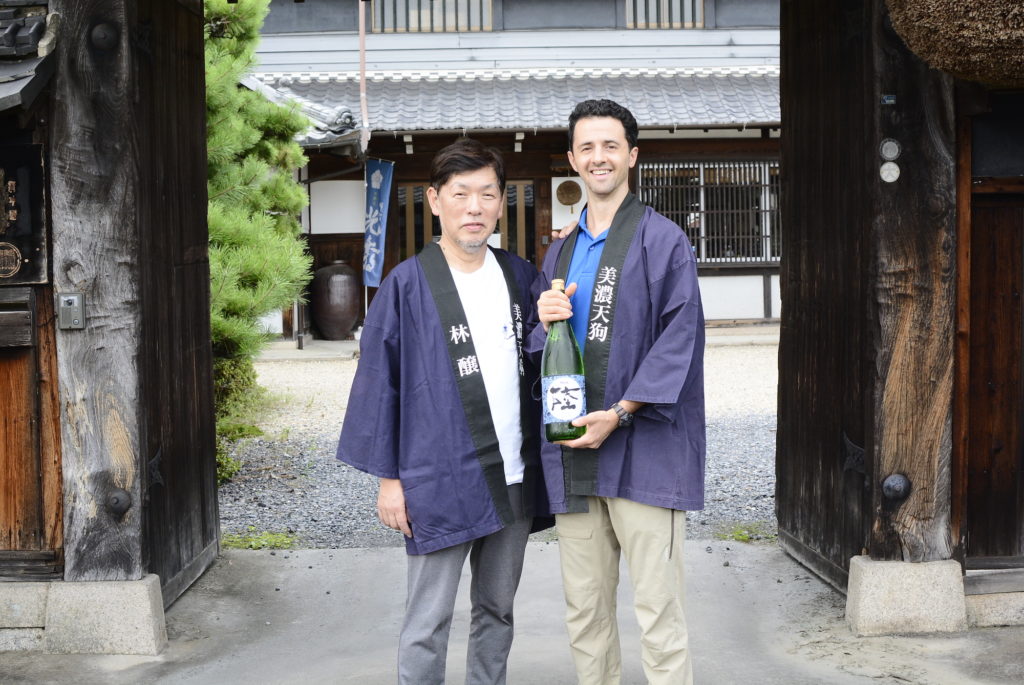
Toshihito Nagai, owner of the traditional Japanese restaurant Kingyo, in Mizunami City, organizes regular sake and food pairing workshops with the hope of spicing up the Higashi Mino sake scene. In the summer, for instance, he offers lessons in the best sake for ayu sweet fish, or a style of warming sake and then cooling it instantly with ice cubes. Mr. Nagai describes his ideas as marriages between Japanese cuisine and sake.
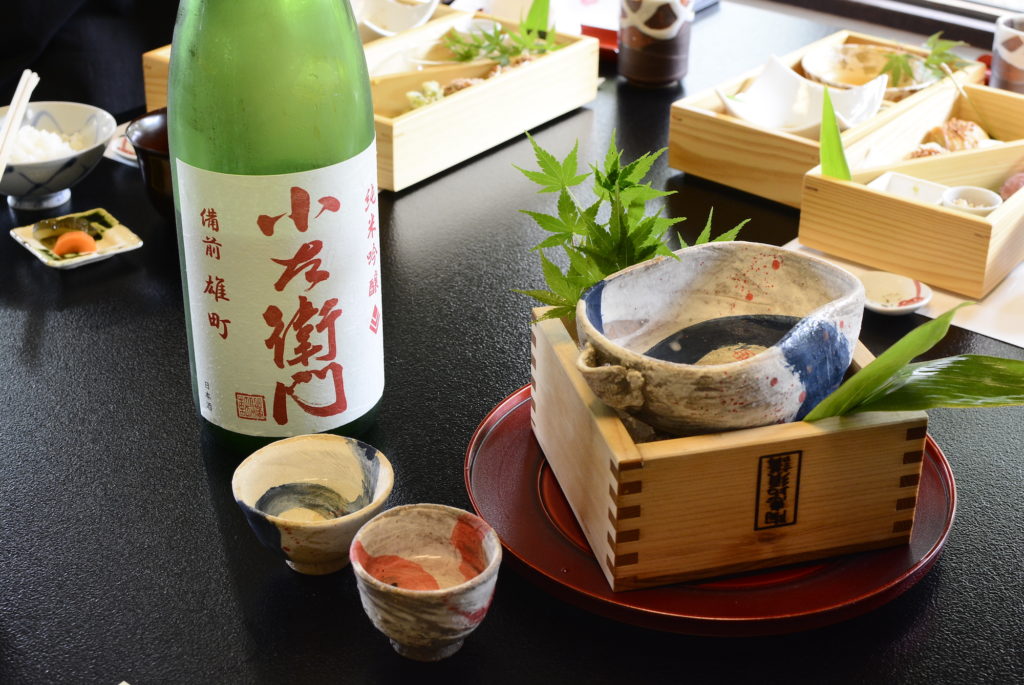
Mizunami City is also the center of a local movement to promote not sake but beer, led by Camado Brewery, a maker of craft beer established in 2020. The president, Eriko Azuma, is originally from Mizunami City. She left once and then came back armed with experience in regional revitalization programs throughout Japan and her love for beer. The company not only produces craft beer but also uses the beer as a stepping stone to promote other local specialties such as local Mino foods and Mino craft ware to pair with the beer.
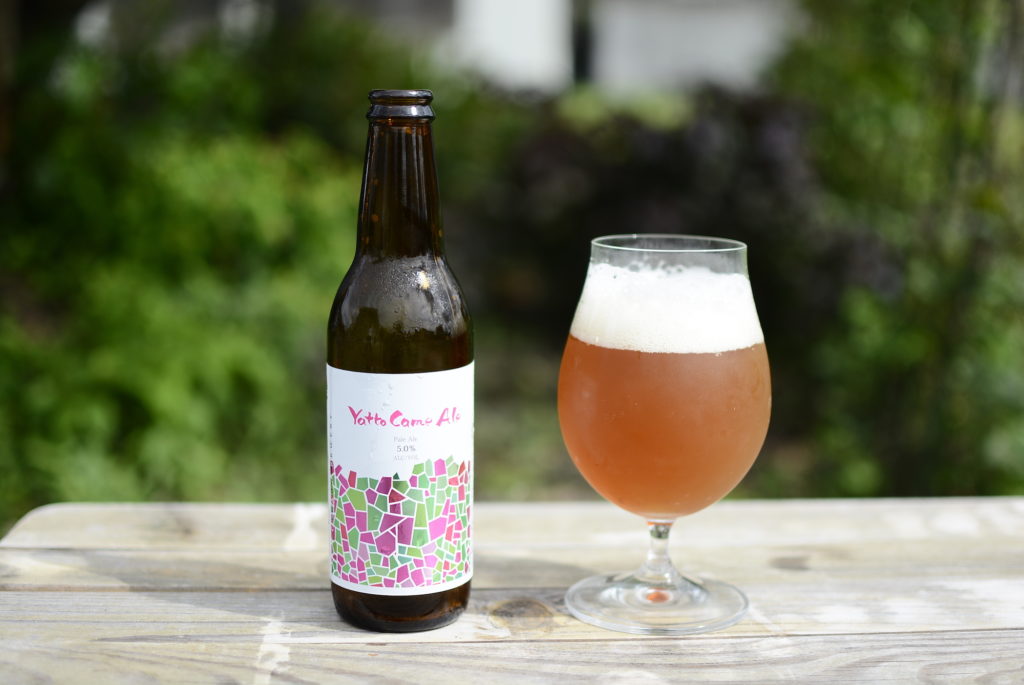
Promoting ceramics and sake as a local culture
Sake and ceramics made from the soil of Higashi Mino—our final stop was a liquor store dedicated to connecting the two art forms and promoting them together as a culture. We returned to Tajimi City and headed for one of Mr. Hanayama’s favorite hangouts: Tamaki Saketen.
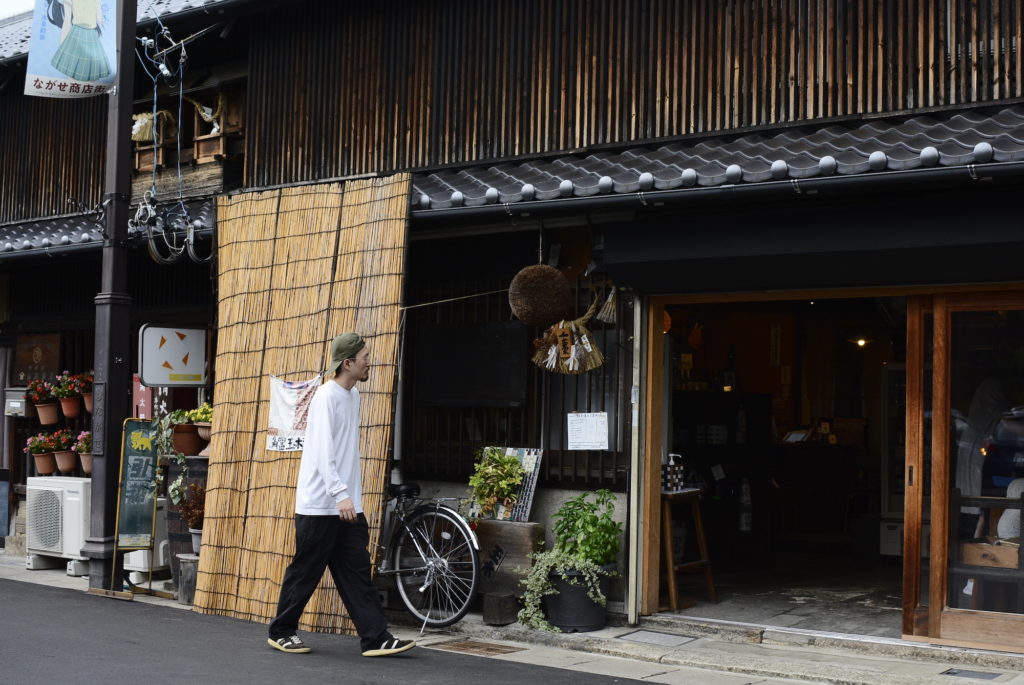
The fourth-generation proprietor, Hidenori Tamaki, says he aimed to do something from the position of a liquor store in an area famous for ceramic art. His solution was to follow his love of ceramics and dedicate an area of the store fro exhibitions of local artists. Mr. Tamaki also organizes regular workshops themed around sake and sake drinkware. It was at one of these events at Tamaki Saketen where Mr. Hanayama bought his first sake set. “Mr. Tamaki is really persuasive. He has gotten me hooked on the world of sake,” he laughs.
Mr. Tamaki’s workshops do not end with sake and sake drinkware but also feature other combinations like coffee and pasta. He says he brings local ceramic artists on board and explores ideal ceramic designs for different dishes. With Mr. Hanayama to present the enchanting qualities of Higashi Mino ceramics, and Mr. Tamaki to coordinate them at the level of actual lifestyles, the future of the sake and sake drinkware culture in Higashi Mino looks be extremely bright and exciting. Which definitely deserves a big ‘Cheers! and Kanpai!’ and well worth a visit to Higashi Mino to experience first hand.
